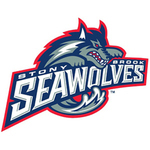Oregon State University
Profile
Size
10 / 10Cost
5 / 10Selectivity
2 / 10-
Team Conference
MCLA Div. 1
-
College Type
4-year, Public
-
Campus Type

City: Small
Student Body
Gender
- Male
- Female
Enrollment
- Full Time
- Part Time
Geography
- In-State
- Out-of-state
- Foreign
- Other
Ethnicity
- White
- Black
- Asian
- Latino
- Foreign
- Other
Other includes American Indian, Native Alaskan, Native Hawaiian or other Pacific Islander, two or more races and unknown race / ethnicity.
Team Road Trips
Most road games for Oregon State are scheduled for the Oregon, Idaho, and Washington areas against teams including Oregon, Boise State, Washington, Washington State, and Idaho. The team has also traveled to Montana to play the University of Montana at Washington Grizzly Stadium. Other trips have included California, where the Beavers traveled to Petaluma to play Chapman and Sonoma State.
Recruit Commits
2016 | |||
Hometown |
Position(s) | ||
| Connor Griffin | Burlingame, CA | Mid, Faceoff | |
Location
Team Videos
Where Grads Live
- Portland Oregon Area
- Corvallis Oregon Area
- Greater Seattle Area
- Eugene Oregon Area
- San Francisco Bay Area
- Greater Los Angeles Area
- Greater San Diego Area
- Medford Oregon Area
- Phoenix Arizona Area
- Greater Denver Area
- Washington D.C. Metro Area
- Boise Idaho Area
- Sacramento California Area
- Richland/Kennewick/Pasco Washington Area
- Orange County California Area
Where Grads Work
- Intel Corporation
- Nike
- Hewlett-Packard
- OHSU | Oregon Health & Science University
- Microsoft
- Boeing
- Kaiser Permanente
- State of Oregon
- US Forest Service
- CHTwoM HILL
- Providence Health & Services
- US Navy
- US Army
- Portland State University
- IBM
What Grads Do
- Engineering
- Operations
- Sales
- Entrepreneurship
- Education
- Research
- Information Technology
- Program and Project Management
- Finance
- Healthcare Services
- Consulting
- Support
- Marketing
- Media and Communication
- Arts and Design
Niche Grades
Overall Experience

Student Life

Professor Rating

Academics

Athletics

Campus

Academics
Test Scores
This range represents the middle half of incoming freshman from the 25th to 75th percentile. The writing component is now optional and no longer reported. Historical writing ranges: 460 - 590 for SAT; 7 - 8 for ACT
This distribution represents incoming freshman test scores and GPA on 4.0 scale.
Admissions
Total |
Male | Female | |
| Applicants | 15,786 | 7,581 | 8,205 |
| % Admitted | 82% | 80% | 85% |
| % Admits That Enroll | 26% | 28% | 24% |
| Incoming Freshman Average GPA | 3.67 |
Admission Considerations
Required | Rec. | |
|---|---|---|
| High School GPA | ||
| High School Rank | ||
| High School Transcript | ||
| College Prep Classes | ||
| Recommendations | ||
| Demonstrate Competencies | ||
| Admission Test Scores | ||
| Other Tests (Wonderlic, etc.) | ||
| TOEFL (English proficiency) |
 Admissions office
Admissions office
Majors / Programs
Degrees offered by popularity. Type = Bachelor.
 Athlete graduation rate
Athlete graduation rate
Financial
Net Price
Average net price = sticker price - financial aid.
$19,273
Average net price by income for incoming freshman receiving financial aid.
Net price for students paying in-state tuition rate (public institutions).
Sticker Price
Sticker price = estimated total cost of attendance.
In-state | Out-of-state | |
On Campus | ||
| Tuition & Fees | $11,715 | $28,846 |
| Books & Supplies | $1,200 | $1,200 |
| Cost of Living | $12,306 | $12,306 |
| Personal Expenses | $2,694 | $2,694 |
| Sticker Price | $27,915 | $44,821 |
Personal expenses includes laundry, transportation, entertainment and furnishings.
Financial Aid
85% of full-time, incoming freshman receive financial aid.
Receiving Aid % | Avg. Aid Amount | |
Type of Aid | ||
| Grant or Scholarship | 75% | $8,344 |
| Federal Grants | 23% | $4,817 |
| Pell Grants | 23% | $4,601 |
| Other Federal | 7% | $700 |
| State & Local Grants | 17% | $3,333 |
| Institutional Grants | 72% | $6,310 |
| Student Loans | 43% | $7,659 |
| Federal Loans | 41% | $5,027 |
| Other Loans | 7% | $16,549 |
All financials shown for full-time, incoming freshman.
Total Amount | Per Student | |
Endowment | ||
| Financial Assets | $676 Million | $21,817 |
Value of endowment assets at fiscal year end.
Debt
Total federal debt after graduation for undergrad borrowers: $23,393.
Total cumulative student debt by percentile.
Total Principal | Monthly Payment | |
| 10 Year Repayment | $17,115 | $249 |
Most student loans have a grace period before repayment begins.
3 Year Avg. Default Rate: 3.7%
Avg. rate for colleges with lacrosse is 5.1%.
Total federal debt excludes private student loans and parent PLUS loans. Cumulative debt cohort includes 10,578 students.
Salary
Earnings 10 years after enrollment: $49,600
Earnings of former students working by percentile.
Earnings of former students who received federal financial aid. Figures shown are median.
Payback
How long until this college investment pays off: 5.01 years.
Median debt and foregone earnings divided by median earnings. Foregone earnings assumes 4 years to graduation; at this school, 35% of students graduate on time.
Team Social
Campus Safety
On Campus |
In Res. Halls |
|
|---|---|---|
Criminal Offenses |
||
| Murder | - | - |
| Negligent Manslaughter | - | - |
| Rape | 13 | 13 |
| Fondling | 6 | 6 |
| Incest | - | - |
| Statutory Rape | - | - |
| Robbery | 2 | 1 |
| Aggravated Assault | 6 | 5 |
| Burglary | 20 | 14 |
| Motor Vehicle Theft | 5 | 3 |
| Arson | 9 | 9 |
In Residence Halls are a subset of On Campus statistics. Murder includes non-negligent manslaughter.
The crime data reported by the institutions have not been subjected to independent verification by the U.S. Department of Education. Therefore, the Department cannot vouch for the accuracy of the data reported here. Statistics represent 3-year average data.
Data from The National Center for Education Statistics (NCES), the primary federal entity for collecting and analyzing data related to education.
Carnegie Classifications
Category |
Classification |
|---|---|
| Basic Classification | Doctoral Universities: Highest Research Activity |
| Undergrad Instruction | Professions plus arts & sciences, high graduate coexistence |
| Graduate Instruction | Research Doctoral: Comprehensive programs, with medical/veterinary school |
| Enrollment Profile | High undergraduate |
| Undergrad Profile | Four-year, medium full-time , selective, higher transfer-in |
| Size and Setting | Four-year, large, primarily nonresidential |
Carnegie classifications provide a framework for evaluating comparable schools.
Similar Academic Schools
-

-

-

-

-

-

-

-

-

-

-

-

-

-

-

-

-

-

-

-

 See more college grades
See more college grades Free ACT and SAT test prep
Free ACT and SAT test prep Free SAT test prep
Free SAT test prep Free scholarship search
Free scholarship search